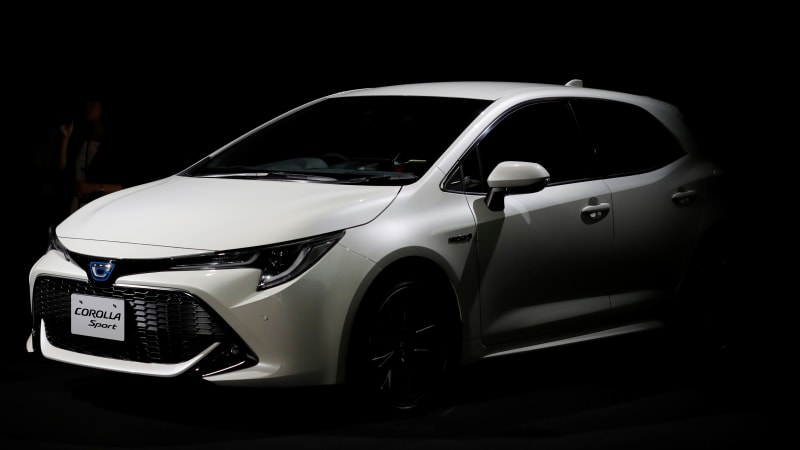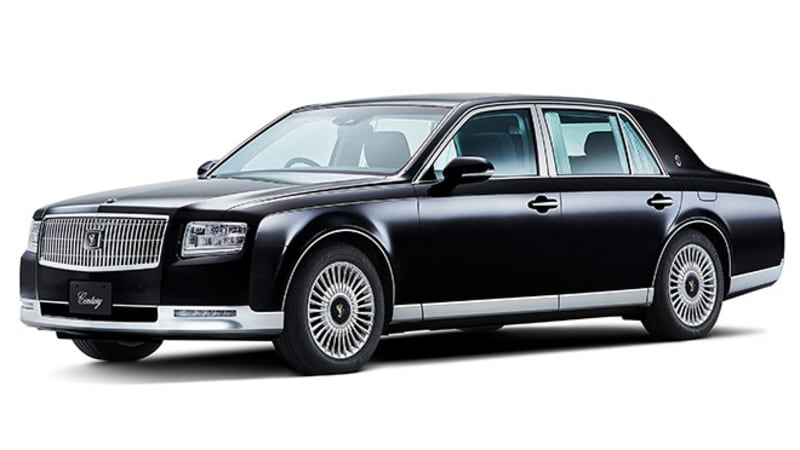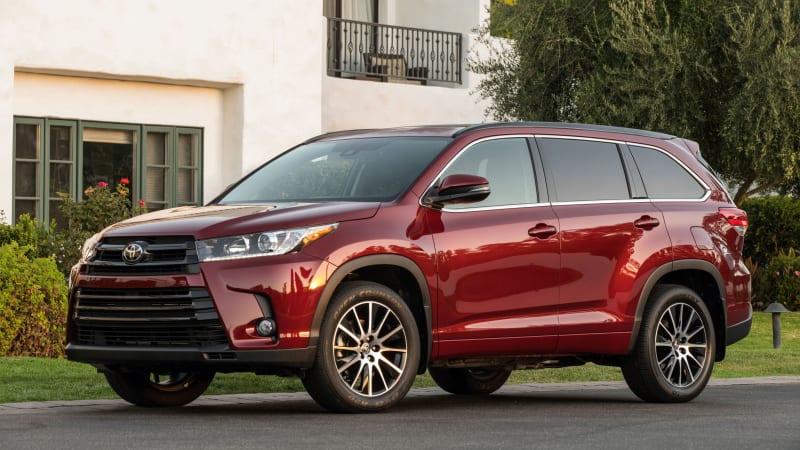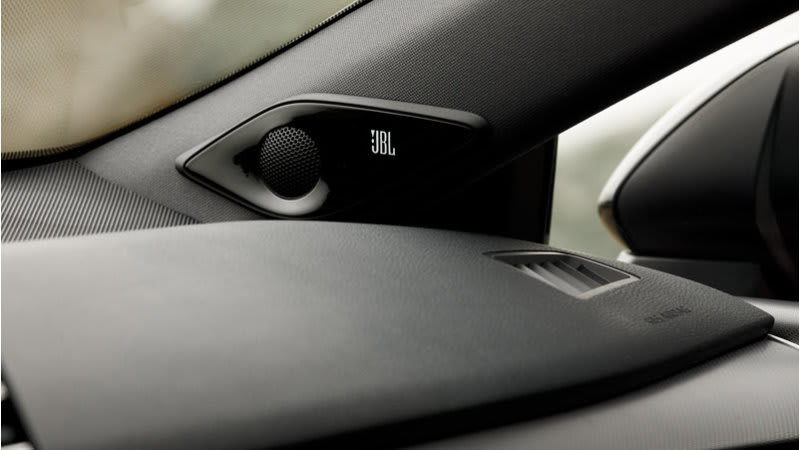New 2016 Lamborghini Aventador Concept
Agya Club Indonesia
Aston Martin DB10 - James Bond 007 -
Agya Club Indonesia
2016 Lotus Evora 400
Agya Club Indonesia
2016 Porsche Cayman GT4
Agya Club Indonesia
2016-Lexus-IS-250
Agya Club Indonesia
Jumat, 29 Juni 2018
Kamis, 28 Juni 2018
Toyota: Tariffs would add $1,800 to price of a Corolla
Filed under: Government/Legal
 They're building a new $1.6 billion joint assembly plant in Alabama .
They're building a new $1.6 billion joint assembly plant in Alabama .
Continue reading Toyota: Tariffs would add $1,800 to price of a Corolla
Toyota: Tariffs would add $1,800 to price of a Corolla originally appeared on Autoblog on Thu, 28 Jun 2018 12:15:00 EDT. Please see our terms for use of feeds.
Permalink | Email this | CommentsAgya Club Indonesia
Senin, 25 Juni 2018
Minggu, 24 Juni 2018
AGYA CLUB INDONESIA : NASCAR Toyota/Save Mart 350 Predictions, Who Will Win? 6/24/18
Toyota/Save Mart 350 Predictions

The NASCAR Monster Energy Cup Series battles its first road course of the season this afternoon with the running of the Toyota/Save Mart 350. Here’s the drivers we like to contend for the victory.
Sabtu, 23 Juni 2018
A brand new Century commences at Toyota
Filed under: Green,Toyota,Sedan,Hybrid,Luxury
 Third-generation Century luxury sedan drops the V12, adds tech and symbolism.
Third-generation Century luxury sedan drops the V12, adds tech and symbolism.
Continue reading A brand new Century commences at Toyota
A brand new Century commences at Toyota originally appeared on Autoblog on Sat, 23 Jun 2018 13:55:00 EDT. Please see our terms for use of feeds.
Permalink | Email this | CommentsAgya Club Indonesia
Jumat, 22 Juni 2018
2018 Toyota Highlander Buying Guide | A popular 3-row crossover, explained
Filed under: Ownership,Toyota,Car Buying,Crossover

Continue reading 2018 Toyota Highlander Buying Guide | A popular 3-row crossover, explained
2018 Toyota Highlander Buying Guide | A popular 3-row crossover, explained originally appeared on Autoblog on Fri, 22 Jun 2018 09:30:00 EDT. Please see our terms for use of feeds.
Permalink | Email this | CommentsAgya Club Indonesia
Kamis, 21 Juni 2018
Toyota Camry Returns to Europe
The Camry has long been the best-selling passenger car in the U.S., but it isn’t such a staple in many other parts of the world. Take Europe for example, which stopped selling the model in 2004 due to slow sales. Now, Toyota has decided to bring the Camry back to the continent where it will replace the Avensis.
The Toyota Camry will come with one powertrain option: a 2.5-liter gas engine with an electric motor. With the addition of the Camry, Toyota will now have eight hybrid electric models in its European lineup. Sales will begin in Western Europe in the first quarter of 2019.
Camrys for Europe will be imported from Japan. If it’s anything like the Japanese car, or the one sold in the U.S. for that matter, it will produce 175 hp and come equipped with a CVT. Speaking with Automotive News Europe, a Toyota spokesman said the Camry’s “main purpose is for fleet customers.” That makes sense because cars that produce low carbon dioxide emissions can draw in reduced company car tax in many countries in Europe.
Toyota sells the Camry in more than 100 countries around the globe. So far, more than 19 million units have been sold since the car first went on sale in 1982.
The 2018 Toyota Camry rides on the automaker’s new TNGA platform. As we wrote in our First Test, it’s the sportiest Camry we’ve seen and it represents a big improvement from the previous generation. In the U.S., sales of the Camry are still going strong despite the market trend favoring crossovers. The Camry was Toyota’s second best-selling vehicle in the U.S. last year, behind the RAV4 crossover.
Source: Toyota, Automotive News Europe (Subscription required)



















The post Toyota Camry Returns to Europe appeared first on Motor Trend.
Agya Club IndonesiaToyota Camry Returns to Europe
The Camry has long been the best-selling passenger car in the U.S., but it isn’t such a staple in many other parts of the world. Take Europe for example, which stopped selling the model in 2004 due to slow sales. Now, Toyota has decided to bring the Camry back to the continent where it will replace the Avensis.
The Toyota Camry will come with one powertrain option: a 2.5-liter gas engine with an electric motor. With the addition of the Camry, Toyota will now have eight hybrid electric models in its European lineup. Sales will begin in Western Europe in the first quarter of 2019.
Camrys for Europe will be imported from Japan. If it’s anything like the Japanese car, or the one sold in the U.S. for that matter, it will produce 175 hp and come equipped with a CVT. Speaking with Automotive News Europe, a Toyota spokesman said the Camry’s “main purpose is for fleet customers.” That makes sense because cars that produce low carbon dioxide emissions can draw in reduced company car tax in many countries in Europe.
Toyota sells the Camry in more than 100 countries around the globe. So far, more than 19 million units have been sold since the car first went on sale in 1982.
The 2018 Toyota Camry rides on the automaker’s new TNGA platform. As we wrote in our First Test, it’s the sportiest Camry we’ve seen and it represents a big improvement from the previous generation. In the U.S., sales of the Camry are still going strong despite the market trend favoring crossovers. The Camry was Toyota’s second best-selling vehicle in the U.S. last year, behind the RAV4 crossover.
Source: Toyota, Automotive News Europe (Subscription required)



















The post Toyota Camry Returns to Europe appeared first on Motor Trend.
Agya Club Indonesia
Automakers' sound systems: Crank it, don't yank it
Filed under: BMW,Buick,Mercedes-Benz,Toyota,Gadgets,Infotainment,Technology

Continue reading Automakers' sound systems: Crank it, don't yank it
Automakers' sound systems: Crank it, don't yank it originally appeared on Autoblog on Thu, 21 Jun 2018 10:00:00 EDT. Please see our terms for use of feeds.
Permalink | Email this | CommentsAgya Club Indonesia
AGYA CLUB INDONESIA : NASCAR Toyota/Save Mart 350 Odds, Who Do Oddsmakers Favor? 6/21/18
Toyota/Save Mart 350 Odds

The NASCAR Monster Energy Cup Series returns to action this weekend and heads to a road course for the first time this year. Here’s a look at the odds to win the Toyota/Save Mart 350.
2018 Ford EcoSport Titanium FWD First Test: Slow Motions
Let’s get one thing out of the way: The 2018 Ford EcoSport is not a performance car and is not even interested in having fun. This subcompact crossover is made for A-to-B transport. Some folks are OK with that low bar. But can the EcoSport even accomplish that modest task?
Testing director Kim Reynolds found the EcoSport an honest commuter car with predictable understeer when cornering. He noted there wasn’t enough power to get anyone into trouble. But that’s about as strong as the praise gets.

Even in terms of running errands and commuting, the EcoSport falls somewhat flat. It rides fine when you’re on road surfaces that are as smooth as glass. But it tramlines the grooves on the road, tiptoes over small bumps, and crashes over big ones—while shaking the whole cabin. All-wheel-drive-equipped models may ride better, as they come with an independent rear suspension instead of the torsion beam found in our front-drive tester.
With 123 hp and 125 lb-ft of torque from its 1.0-liter EcoBoost turbo I-3, the 2018 EcoSport is one of the least powerful subcompact crossovers. You need to plan ahead when you’re passing and climbing up a steep grade, especially with five people on board. The torque that you do have is usable but it’s not enough for a vehicle that weighs 3,134 pounds. The six-speed automatic doesn’t help much because it’s too fuel-economy-minded. Combine that with lazy throttle response—even in Sport mode—and the EcoSport feels even slower.
Road test editor Chris Walton called out the transmission’s odd gearing, which had closely spaced first and second gears, but then a tall third gear that causes it to “fall in a hole” during acceleration. There’s also a lot of front dive and rear lift during hard braking—followed by the car settling a few inches after releasing the brake pedal once fully stopped.




Given these limitations, the EcoSport isn’t fun to drive. Perhaps Ford knew that when giving it its name: The correct pronunciation is the numb-sounding “echo-sport,” rather than a chipper “eek-oh-sport.” There’s excessive body roll even when taking easy corners. Throw it into a turn at higher speeds, and it becomes obvious that this car is best left on straight roads. It doesn’t help that the steering is, as expected, light and uncommunicative. Competitors like the Mazda CX-3 and Hyundai Kona offer a sportier driving experience.
What does that mean when we take it out to the test track? Our tester, which was powered by a 1.0-liter turbo I-3 paired to a six-speed automatic transmission, hit 60 mph in 10.7 seconds and finished the quarter mile in 17.9 seconds at 77.2 mph, among the slowest in its class. On the handling tests, it finished the figure eight in 28.4 seconds with an average of 0.57 g and generated 0.79 g of lateral acceleration on the skidpad. Stopping from 60 mph took 120 feet, putting it mid-pack, shorter than the Honda HR-V and Toyota C-HR but longer than the Mazda CX-3 and Fiat 500X.
Does the 2018 Ford EcoSport make up for its lethargy by means of strong fuel efficiency? Nope. The front-drive model, which comes exclusively with the 1.0-liter turbo I-3, is EPA-rated at 27/29 mpg city/highway. Opting for all-wheel drive adds a 166-hp 2.0-liter I-4 but drops EPA fuel economy ratings to 23/29 mpg. Our friends at EQUA Real MPG, however, did manage to yield 24.7/34.7 mpg from their tests, showing that the EcoSport’s efficiency takes a hit in heavy city driving.
Those figures are a few ticks behind the Honda HR-V, Mazda CX-3, and Hyundai Kona. The Jeep Renegade and Fiat 500X are less efficient at 21/29 mpg with all-wheel drive (22/30 mpg for front-drive models) and nine-speed automatic, but they’re also more powerful.

Now, to livability. Because it’s a crossover, the Ford EcoSport has to be practical, right? Not quite. The cabin is intimate, which means despite having belts for five, you should limit occupancy to four adult passengers unless you want to feel squished in the back. The front seats are narrow and lack side support, especially for bigger adults. Interior build quality is not a strong point with a cabin filled with hard, brittle plastics. Even the soft, padded surfaces near where your elbows and forearms would relax (as well as those on the dash) feel cheap. Some of the panel gaps are wide enough to fit a (skinny) finger. On our test model, the upper panel dividing the driver’s door and the dash was misaligned.
Cargo carrying capability isn’t impressive, despite Ford’s claim that the 2018 EcoSport has 20.9 cubic feet of space with the rear seats up and 50 cubic feet with them down. Sounds impressive for a subcompact, but the large hump in between the floor and the rear seat backs means it’s not easy to haul large, bulky items. There’s a three-level cargo floor that helps add an extra layer of flexibility, but there’s no getting past that this is a poorly packaged vehicle. The lack of a flat load floor, combined with the car’s narrowness and intrusions from the wheel well make the space you have less usable.
In comparison, the Honda HR-V has 23.2 cubic feet with the rear seats up and between 55.9 and 57.6 cubic feet with the rear seats down depending on the trim level. Honda’s standard Magic Seats and flat load floor also gives the HR-V unrivaled flexibility; it also has a hatch instead of the Ford’s side-hinged door, which makes loading and unloading easier. Sure, the HR-V is slightly larger than the EcoSport but even the Hyundai Kona, which is similarly sized as the EcoSport, has more usable space. The Kona’s cargo capacity checks in at 19.2 cubic feet with the rear seats in place and 45.8 cubic feet with them folded. But there’s a difference between numbers and actual usability—where the Kona wins because of its wider door opening, lack of intrusions into the space, and the car being slightly wider.





Millennials love their electronic devices, and the EcoSport’s infotainment system meets those needs. Ford’s Sync 3 is one of the best multimedia interfaces available, featuring a quick-responding 8.0-inch touchscreen, clear graphics, and a straightforward menu layout with most of the important functions easy accessible. The EcoSport’s diminutive interior means the touchscreen is in close proximity to the driver, eliminating the need to reach forward when using it. Apple CarPlay and Android Auto work well, but you can’t have it operate alongside the main interface, hence there’s no way to play music from a flash drive and use Google Maps via Android Auto simultaneously. The nine-speaker B&O Play audio system (on Titanium trim and up) is one of the best in its class, featuring crisp sound and minimal distortions, creating a pleasant listening experience.
Our front-drive EcoSport Titanium ($26,784 as tested) provides a long list of standard features that includes leather upholstery, heated front seats, a power-adjustable driver’s seat, an 8.0-inch touchscreen, integrated navigation, ambient lighting, rear parking sensors, and automatic headlights. Blind spot warning and rear cross traffic alert are the only driver assistance features available. Ford doesn’t offer automatic emergency braking, forward collision warning, pedestrian detection, lane keeping assist, lane departure warning, and adaptive cruise control on any EcoSport model.
Although you get a generous list of features, there’s not enough to justify the 2018 Ford EcoSport over its competitors. Its tiny dimensions help it navigate the city, but it comes at a cost. The Honda HR-V proves you can have a practical small crossover that doesn’t skimp on space. The EcoSport is not as fun to drive as the Hyundai Kona and Mazda CX-3. It also doesn’t ride well, due to a suspension that’s easily upset by road imperfections. If the EcoSport has a redeeming quality, it’s the multimedia system, which is a modern and user-friendly unit; however, many competitors have excellent infotainment systems, including UConnect 4 on the Jeep Renegade and Fiat 500X. The good multimedia system isn’t enough to tip things in the EcoSport’s favor; pretty much everything else about the car disappoints.

| 2018 Ford EcoSport Titanium FWD | |
| BASE PRICE | $26,874 |
| PRICE AS TESTED | $26,874 |
| VEHICLE LAYOUT | Front-engine, FWD, 5-pass, 4-door SUV |
| ENGINE | 1.0L/123-hp/125-lb-ft* turbo DOHC 12-valve I-3 |
| TRANSMISSION | 6-speed automatic |
| CURB WEIGHT (F/R DIST) | 3,134 lb (60/40%) |
| WHEELBASE | 99.2 in |
| LENGTH x WIDTH x HEIGHT | 161.3 x 69.5 x 65.1 in |
| 0-60 MPH | 10.7 sec |
| QUARTER MILE | 17.9 sec @ 77.2 mph |
| BRAKING, 60-0 MPH | 120 ft |
| LATERAL ACCELERATION | 0.79 g (avg) |
| MT FIGURE EIGHT | 28.4 sec @ 0.57 g (avg) |
| REAL MPG, CITY/HWY/COMB | 24.7/34.7/28.4 mpg |
| EPA CITY/HWY/COMB FUEL ECON | 27/29/28 mpg* |
| ENERGY CONS, CITY/HWY | 125/116 kW-hrs/100 miles |
| CO2 EMISSIONS, COMB | 0.70 lb/mile |
| * hp/torque values achieved with 93-octane fuel; EPA results with 87 octane | |


























The post 2018 Ford EcoSport Titanium FWD First Test: Slow Motions appeared first on Motor Trend.
Agya Club Indonesia










